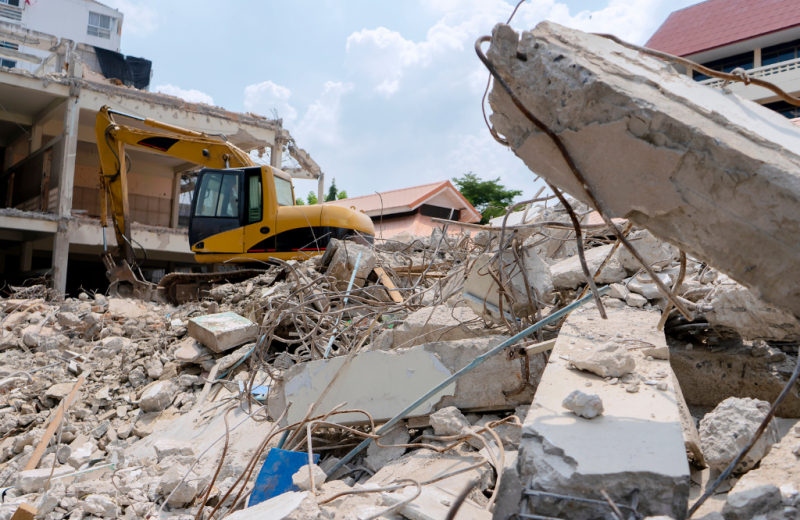 Op-eds
/ The Israeli-Palestinian Peace Process
Op-eds
/ The Israeli-Palestinian Peace Process
Israel and the United States have agreed on the need to defeat Hamas, including in the southern Gaza city of Rafah, officials from both countries said after a meeting of the Strategic Consultative Group earlier this week.
As part of that virtual meeting, the US expressed its concerns with various courses of action in Rafah while Israel “agreed to take these concerns into account,” according to a statement released by the White House.
Between the lines, however, the meeting highlighted that militarily, Hamas has not been defeated in Gaza despite almost six months of war. It remains unclear how long Hamas could be able to fight against the Israeli military.
How strong is Hamas?
“Of course, Hamas wants to say that they haven’t been touched and that they have great weaponry,” H. A. Hellyer, an analyst at the London-based Royal United Services Institute for Defence and Security Studies, told DW.
However, Hamas is not alone in wanting to project power.
“Also, the Israelis want to say that they’ve been very successful in their objectives,” said Hellyer. “In this regard, there is a lot of propaganda on both sides, although, I think there’s been much more coming from the Israelis, who have been involved in far more operations, resulting in many times more casualties.”
Meanwhile, Israel’s war against Hamas has also led to a dramatic reduction in the number of missiles fired at Israel, said Gil Murciano, CEO of the Israeli Institute for Regional Foreign Policies. This can be seen not only in the wider Tel Aviv area but also near Israeli territory near the border to Gaza.
“The number of missiles, let alone the casualties, has been reduced almost completely,” he said.
“It’s also worth mentioning that the operations of the Israel Defense Forces in the center part of the Gaza Strip led to the destruction of the main production lines of advanced weapons, missiles and drones, which has caused major damage to the capability that Hamas has built for many, many years.”
Considerable losses for Hamas, ‘but they are still functional’
Michael Milshtein, an ex-military intelligence officer and now a researcher at Tel Aviv University’s Moshe Dayan Center, estimated that Israel has destroyed at least 70% to 80% of the Hamas arsenal. A lack of spare parts has also hindered Hamas’ ability to fight.
“Most of the supplies used to be smuggled through the border crossing at Rafah. However, this [crossing] is now very meticulously monitored,” he said.
The tunnels, however, are a different story.
“In my view, Hamas still has at least 50% of the tunnels they had before October 7,” Milshtein told DW. The tunnels provide shelter for Hamas fighters and make it hard for Israeli forces to control the fighters’ movements.
Hamas has also been affected by losing personnel, Kobi Michael, an analyst at the Israeli think tank Institute for National Security Studies, wrote in a recent analysis. However, in his view, the group “will survive politically.”
Michael wrote that he is convinced Hamas is able to regenerate, albeit “without the advanced rocket capabilities displayed during this war.”
Murciano echoed that view, saying Hamas fighters would still be able to operate in small groups using guerrilla tactics.
“However, it is no longer functional at battalion level as only four battalions are still present in the city of Rafah,” he said “They may have been weakened by the Israeli army, but they are still functional.”
Moreover, Milshtein said Israeli forces have to face a further challenge.
“Hamas has lost about 10,000 of their 30,000 members, but this gap can be closed quickly,” he said. “In Gaza there are plenty of young Palestinians that wish to join the Hamas militia.”
Hamas is classified as a terrorist organization by Israel, the US and the EU, among other governments.
Political solution remains key
“Israel probably will face lingering armed resistance from Hamas for years to come, and the military will struggle to neutralize Hamas’ underground infrastructure, which allows insurgents to hide, regain strength and surprise Israeli forces,” a US threat assessment from the US Office of the Director of National Intelligence found in early February.
“However, I don’t think that Hamas is in a position to carry out an attack similar to October 7 as they have been pushed back tremendously,” Hellyer said.
For Murciano, the most important step will be to find a political alternative for the Gaza Strip.
“If there is no alternative, the military successes are meaningless,” he said. “If you don’t speak about the day after in Gaza, then this entire discussion is futile as a political vacuum would be immediately refilled militarily.”
This article was originally written in German and translated by Jennifer Holleis.
The article was published in “DW” on April 6th.


